Social media marketing for events isn't just about posting a few times and hoping for the best. It's about using social platforms to build buzz, drive registrations, and create a community around your event. It’s the difference between a one-off announcement and an ongoing conversation that keeps people engaged before, during, and after the doors open.
Building Your Pre-Event Social Media Strategy
A powerful social media presence is built long before day one. A thoughtful pre-event strategy is what separates a sold-out success from an empty room. The goal here is to generate excitement and get registrations rolling in by creating a sense of community from the start.
This is about telling a story that gives people a serious case of FOMO, making them feel like they have to be there. This is more important than ever, especially when you consider that 4.9 billion people are on social media. It’s the primary channel for reaching just about everyone.
Pinpoint Your Audience And Platforms
Before you write a single caption, you have to know exactly who you're talking to. Are you trying to reach C-suite executives for an industry conference? Or are you aiming for tech enthusiasts at a product launch? Your answer changes everything, from your tone of voice to the platforms you pour your energy into.
For example, a B2B conference focused on corporate leadership will find its audience on LinkedIn. On the other hand, a vibrant brand festival will gain traction from the visual-heavy worlds of Instagram and TikTok. Don't spread yourself too thin. It's better to own one or two key channels than to have a weak, scattered presence across five.
This simple graphic breaks down the foundational steps for getting your plan in order.
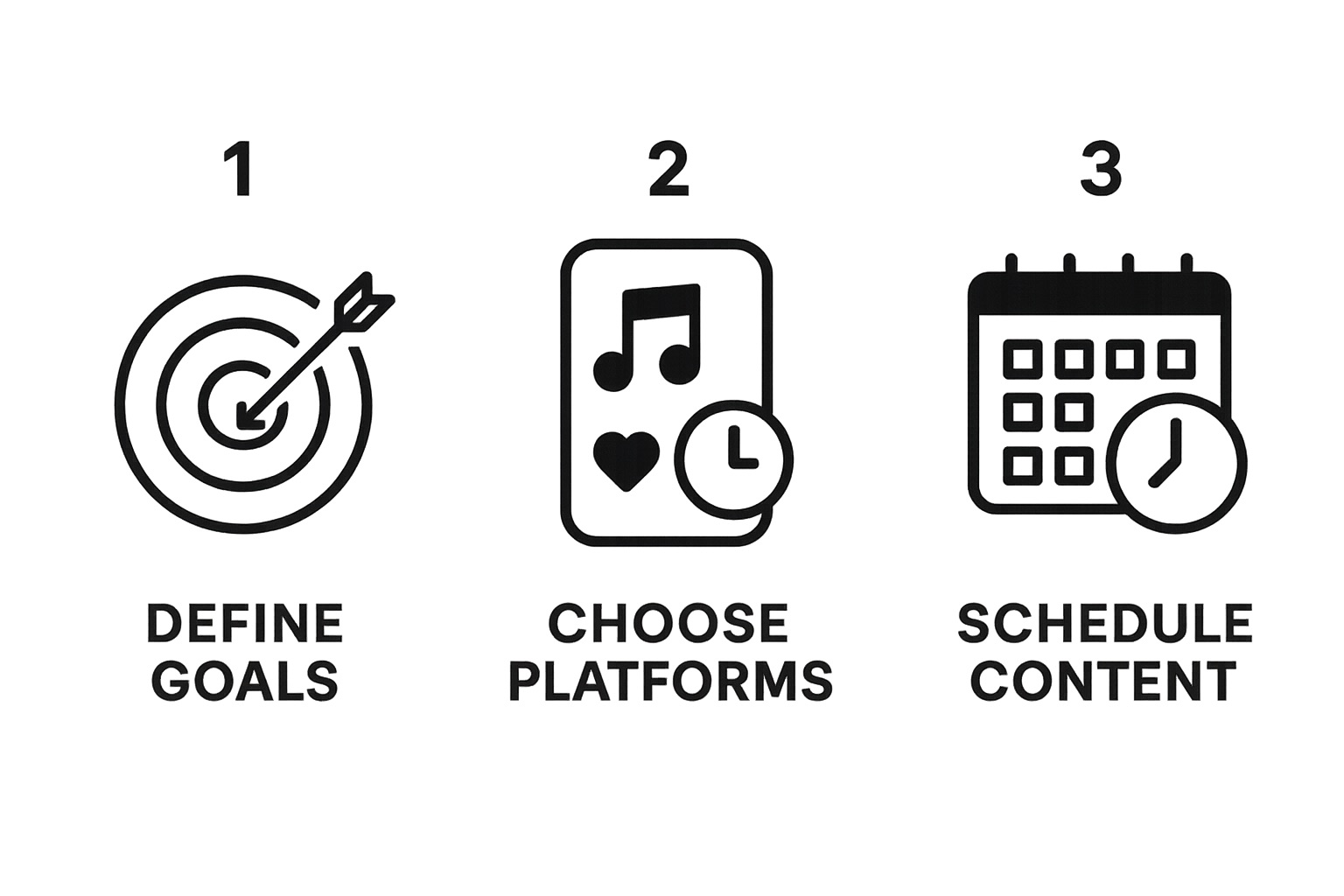
The flow shows a clear path from defining your goals to scheduling your content, turning a big idea into concrete, actionable steps.
Map Your Content And Create A Hashtag
Now that you know who you’re talking to and where you’ll find them, it's time to figure out what you’re going to say. A solid content calendar should be a mix of promotional posts that drive action and value-driven content that builds trust.
Here are a few ideas to get you started:
- Speaker Spotlights: Introduce your keynotes and panelists. Share short video interviews or snappy quote graphics.
- Behind-the-Scenes Updates: Give your audience a sneak peek of the venue setup, the swag bags you’re stuffing, or a planning session. It builds anticipation.
- Early-Bird Reminders: Create a sense of urgency around registration deadlines with countdown clocks and clear calls to action.
Your event hashtag is another massive piece of this puzzle. It needs to be short, unique, and easy to remember. This hashtag is the digital glue that holds every post, picture, and conversation about your event together. For a deeper dive into crafting that narrative, check out these event content marketing best practices.
To make sure your content hits the mark, it's crucial to align it with the platform's strengths.
Matching Your Content to the Right Platform

Choosing the right platform for the right message is half the battle. This table should give you a head start in thinking strategically about where your content will have the most impact.
Ultimately, your pre-event social strategy is all about using these platforms to drive people to your registration page. If you're looking for more ways to get eyes on your event site, explore these proven ways to increase website traffic to amplify your reach.
Crafting Content That Captures Attention
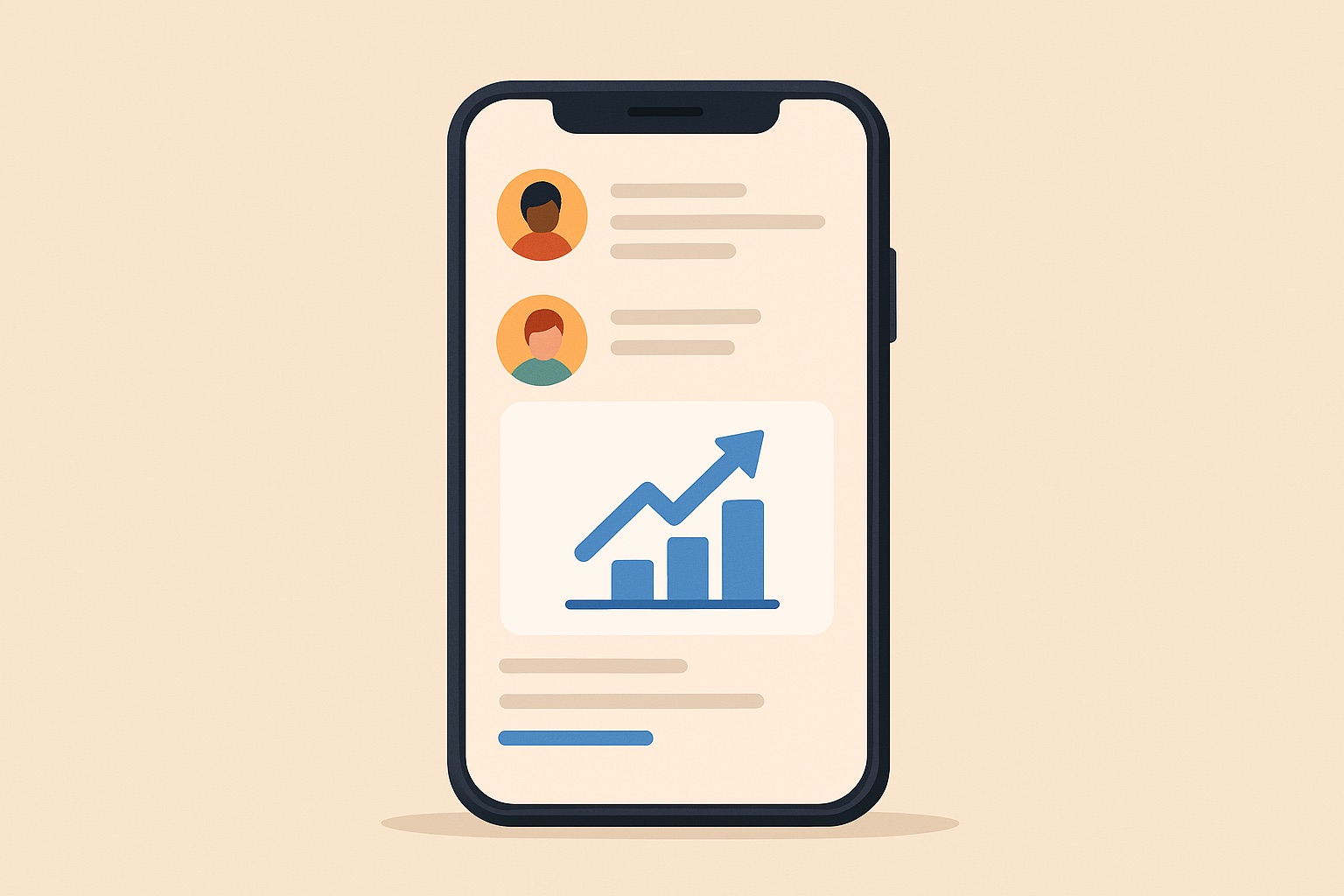
Generic social media posts are the fastest way to get scrolled past. If you want your event promotions to be impossible to ignore, you have to do more than just announce dates and times. Your content needs to entertain, inform, and build a real connection with your audience.
This means you’ve got to experiment with different formats to find what clicks for your event. The most successful social media marketing for events campaigns come from testing bold ideas to see what sparks a conversation. In fact, data shows that marketers who frequently post creative content see a much more positive impact on their business, which translates directly to engagement and ticket sales. You can dig into more of those insights in Hootsuite's latest social media research.
The key is to think like a content creator, not just an event promoter. Your feed should be a destination for compelling stories related to your event, not just a series of advertisements for it.
Embrace Short-Form Video
Short-form video is non-negotiable for building pre-event hype. Platforms like Instagram Reels and TikTok are practically built for sharing the kind of dynamic, attention-grabbing content that tells a story in just a few seconds.
Try using video to introduce your speakers with quick Q&A sessions. Offer a few behind-the-scenes glimpses of your planning process. Or run a countdown that builds tangible excitement. These quick, authentic clips make your event feel more human and accessible, creating a much stronger bond than a static graphic ever could.
Go Beyond Basic Announcements
Your content calendar should be a strategic mix of promotional and value-added posts. Put yourself in your audience's shoes and ask what they actually want to see in their feeds.
Here are a few content pillars we often see succeed:
- Educational Snippets: Share quick tips, surprising statistics, or insightful quotes from your speakers that tie back to the event's core topics. This instantly positions your event as a source of valuable knowledge.
- Interactive Polls and Questions: Ask your followers what they're most excited to learn or which speaker they can't wait to see. This boosts engagement and gives you priceless feedback.
- Showcasing the Experience: If you have an exciting venue or unique on-site activations planned, tease them. Help potential attendees visualize themselves right there in the middle of the action.
An AI-powered photo booth, for instance, can be a major draw. Teasing the wildly creative and personalized outputs attendees can create generates curiosity and gives them a specific, engaging activity to look forward to. This turns a simple feature into a key part of your pre-event narrative, promising a memorable and shareable experience that drives interest long before the doors even open.
Driving Real-Time Engagement During Your Event
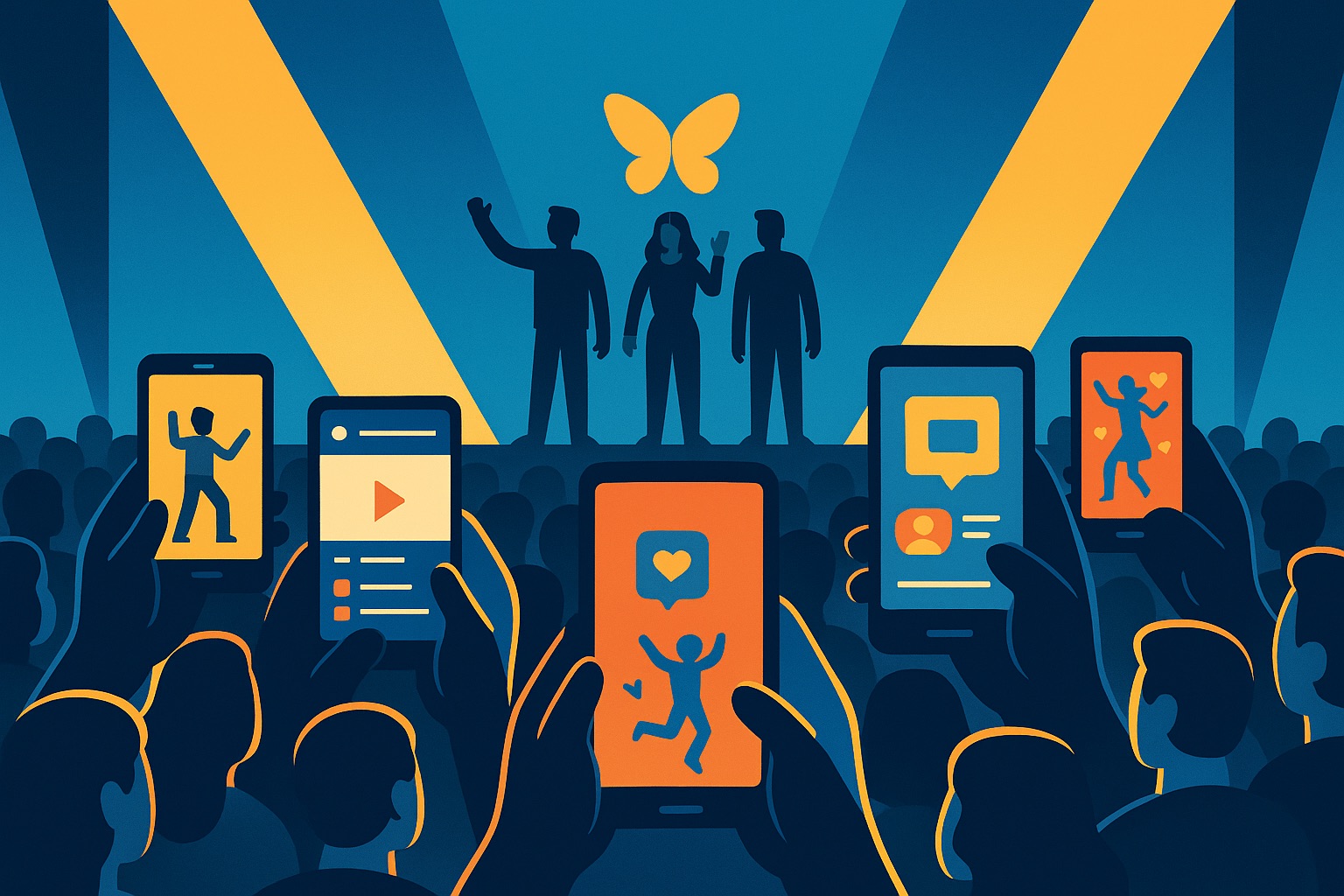
The doors are open and your event is officially underway. This is where your social media strategy pivots. The game is no longer about getting people to show up; it's about amplifying the experience for everyone on-site and creating FOMO for those who aren't.
Think of your event as a content creation engine. Your job is to empower every attendee to become a storyteller for your brand by sharing their own candid moments. This is exactly where interactive tech, like an AI photo booth, shifts from a "nice-to-have" to a core part of your social media marketing for events.
Turn Attendees Into Content Creators
The best promotion you can get comes directly from your attendees. It’s authentic, trusted, and organic. Getting them to post about their experience, what we all call user-generated content (UGC), is one of the most powerful ways to expand your event's reach.
An AI-powered photo experience is a perfect real-world example of this in action. It’s not just a photo; it’s a fun, engaging activity that produces high-quality, branded content that people are genuinely excited to share. Just like that, a simple photo op becomes a powerful marketing activation.
The goal is to make sharing effortless and rewarding. When attendees are having a great time and can instantly post a cool, branded photo or video, they become your most effective marketers without even realizing it.
Another proven tactic is running on-site social media contests. Offer up a prize for the "best post" using your event hashtag. This doesn't just incentivize people to participate; it gamifies the whole experience, adding another fun layer for your guests. If you need some fresh ideas, check out these 7 ways to get more social media engagement.
Amplify the On-Site Experience
Real-time engagement is all about creating a feedback loop between what's happening at the event and the digital conversation. You want to bridge that gap and make your social media presence a visible, tangible part of the atmosphere.
Here are a few practical ways this works well:
- Live-Tweet Key Sessions: Have someone on your team live-tweet keynotes and panels. Pull out powerful quotes, share surprising stats, and post compelling photos to keep your online audience plugged in.
- Set Up a Digital Social Wall: Use large screens or projectors to show a live feed of posts using your event hashtag. This gives participants instant recognition and encourages everyone else to post for their moment in the spotlight.
- Go Behind the Scenes: Use Instagram Stories or TikTok for quick glimpses of what’s happening backstage. Grab a speaker for a quick interview during a break. This kind of content feels exclusive and authentic.
When you weave these tactics into the event itself, your social media stops being something that happens "out there" and becomes part of the live experience. For even more practical tips, we've got a whole guide on how to boost social media engagement at events.
By making the digital conversation a visible and interactive part of your event, you create a far more dynamic and memorable experience for everyone, both in the room and online.
Getting More User-Generated Content with Smart Event Tech
User-generated content (UGC) is the holy grail of event marketing. It's authentic social proof, and it travels much further and faster than anything your brand could say about itself. When a real person shares something cool from your event, their network listens.
But knowing UGC is valuable and actually getting it are two different things. The trick is to weave technology into your event in a way that makes creating and sharing content feel natural, fun, and seamless for your attendees.
When you get this right, you’re not just hosting an event; you’re building a team of enthusiastic brand advocates.
Design Experiences People Want to Share
If you want people to post, you have to give them something worth posting about. This is where your social media marketing for events strategy gets creative and moves beyond just asking for a tag. You need to engineer moments that are visually stunning and practically beg to be shared.
Technology like an AI photo booth or a virtual event microsite can pull this off. These aren't just add-ons; they can become central hubs for capturing the energy of your event. Guests get a fun, interactive experience, and your team gets a firehose of high-quality, on-brand content.
The goal is to design activations that feel like a core part of the event, not just a booth you stuck in a corner.
The best UGC strategies are built around experiences that attendees genuinely want to be part of. The tech should just make the fun happen, it should never get in the way.
Imagine an AI Photo Booth that doesn't just snap a picture but transforms it into a piece of unique, themed artwork. Suddenly, an attendee has something that's not just a photo, but a personalized creation they're genuinely excited to show off. And, of course, it’s subtly branded. This is how you generate content that gets shared.
Want to dive deeper? Check out these winning strategies for user-generated content campaigns.
How to Encourage Participation (And Manage the Results)
Once your cool activations are in place, you need to give people a nudge to engage. While a fantastic experience is often enough, a few simple incentives can dramatically increase your participation rates.
Here are a few practical ideas that work:
- Make it Obvious: Plaster your event hashtag and social handles everywhere. On screens, at the booths, on the napkins, make it impossible for them to miss how to tag you.
- Add Some Friendly Competition: Run a simple contest for the "most creative post" or give a small prize to a random person who shares their content. A little gamification goes a long way.
- Show Off the Goods: Use a social wall or a live mosaic to display attendee posts in real time. Nothing encourages participation like seeing your own face pop up on a giant screen. It’s instant gratification.
Of course, collecting all this content is only half the battle. A video testimonial booth or a virtual event microsite are great ways to centralize all the photos and videos, giving you a single place to review, approve, and repurpose the best stuff. This creates a living, breathing gallery that captures the vibe of your event.
By pairing thoughtfully designed activations with smart, simple incentives, you build a powerful engine for authentic content. This UGC becomes the bedrock of your post-event marketing, giving you incredible social proof and vibrant material to promote your next big thing.
Keeping the Conversation Going After the Event
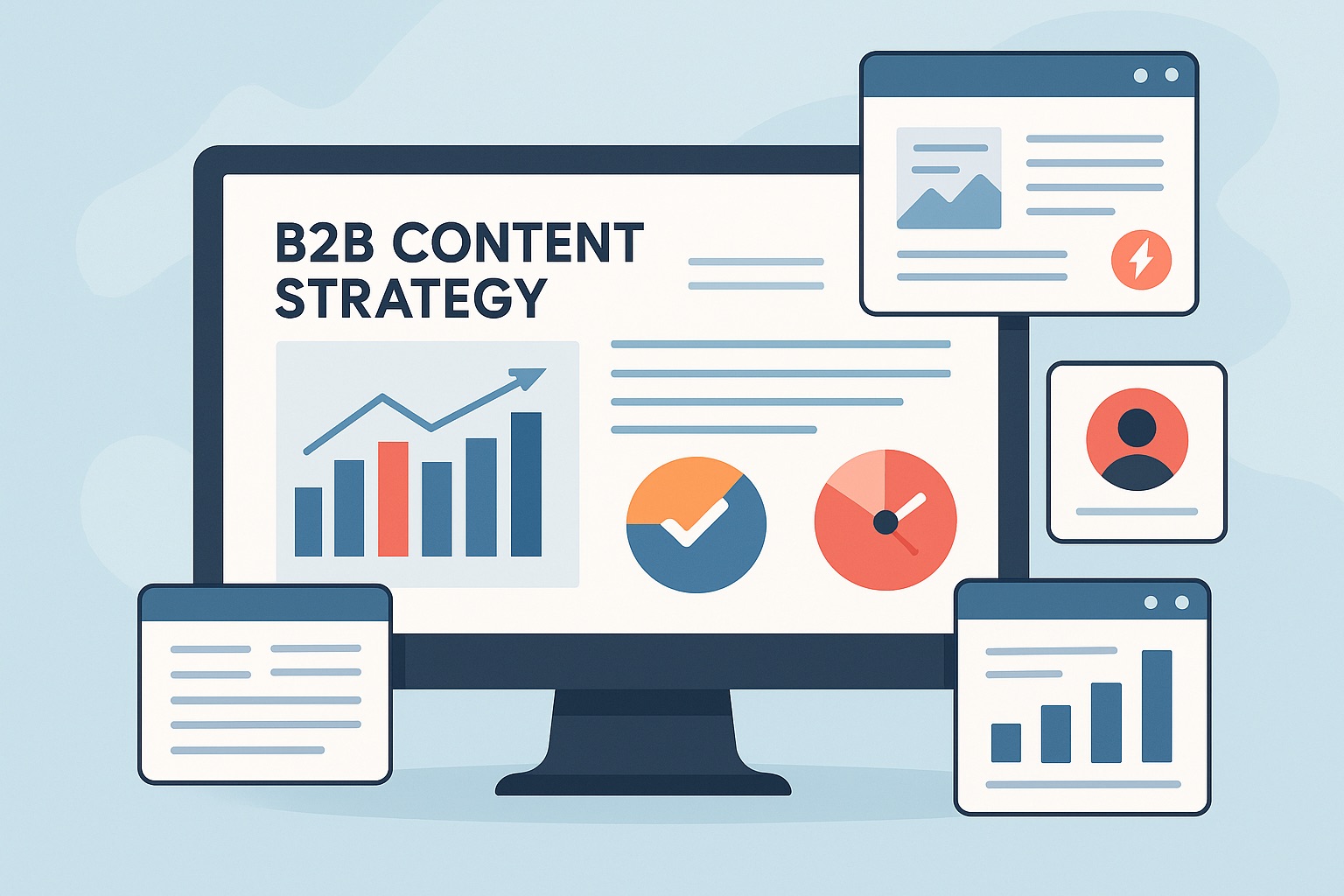
The lights are down and the last guest has gone home, but your social media work is far from over. A smart post-event plan keeps the energy high, nurtures the community you just brought together, and ultimately proves the whole thing was a success.
Think of this as your chance to cement the experience in everyone's mind and build loyalty for whatever you do next.
All that content you gathered during the event is now pure gold. The flood of user-generated content, professional photos, and video testimonials is the fuel for your post-event marketing. It’s the perfect time to share key takeaways, give a massive shout-out to your attendees and sponsors, and ask for the feedback you need to get even better.
Give Your Event Content a Second Life
Now it's time to put all that amazing content to work. That branded photo gallery from your AI Photo Booth? Share it everywhere. Those killer quotes from your keynote speakers? Turn them into eye-catching graphics for social.
This content does double duty. For attendees, it’s a great trip down memory lane. For everyone who missed out, it’s a powerful dose of FOMO that gets them thinking about next year. With an estimated 5.42 billion social media users worldwide, this repurposed content has the potential to reach an enormous audience. You can get more details on how people are using social platforms in Sproutsocial's latest report.
Here are a few core content pieces to start with:
- A "Best Of" Photo Album: Pull together the best shots and create a dedicated album on Facebook or a carousel on Instagram. Don't forget to tag attendees and sponsors to get more eyeballs on it.
- High-Energy Recap Videos: Nothing captures the vibe like video. Edit a fast-paced, 60-second highlight reel for Instagram Reels or TikTok to show off the event’s energy.
- Attendee Testimonial Spotlight: Dig through your event hashtag for the best quotes, posts, and videos shared by your audience. Featuring their words is the most authentic social proof you can get.
A great post-event strategy isn't just about saying "thanks for coming." It's about demonstrating the value your event delivered and making a strong case for why people should clear their calendars for the next one.
Dig Into the Data and Measure Your Impact
After the first wave of post-event content is out, it's time to become a data geek. Analyzing your performance is the only way to know what really resonated, what fell flat, and how to crush it at your next event. A data-informed approach should be the backbone of your social media marketing for events.
Zero in on the metrics that tie back to your original goals. Did you hit your target for hashtag usage? How did the engagement rate on your recap video compare to your pre-event hype? If you used a virtual event microsite, its analytics on content views and shares can be incredibly revealing.
This data isn't just for a report that sits in a folder. It gives you the insights you need to refine your entire strategy. By understanding which content people loved, you can double down on what works and build an even more effective social media plan next time around.
Still Have Questions? We've Got Answers
Executing a smart social media plan for your event can feel like a moving target. We get a lot of questions about what actually works, so let's tackle a few of the most common ones we hear from event pros.
What Metrics Actually Matter?
Chasing vanity metrics like follower counts won't tell you if your strategy is actually driving results. The most important metrics are always the ones tied directly to your business goals.
We like to break our key performance indicators (KPIs) down by the phase of the event:
- Before the Event: This is all about building buzz and getting people to act. Keep an eye on reach, engagement rate, and especially the click-through rates on your registration links. These numbers tell you if your message is landing and driving sign-ups.
- During the Event: The focus shifts to real-time conversation. You’ll want to monitor event hashtag usage, brand mentions, and the sheer volume of user-generated content. This is where an AI photo booth’s analytics dashboard is clutch for tracking real-time shares.
- After the Event: Now it's time to prove it was all worth it. Analyze the overall engagement on your recap content, dig into audience sentiment, and tie it all back to your final conversion data to show the event's ROI.
The real goal here is to connect the dots between social media chatter and tangible business outcomes like ticket sales or qualified leads. That’s how you prove your event marketing is more than just pretty pictures.
How Early Should We Start Promoting an Event?
This is a classic "it depends" question, but the answer really comes down to the scale of your event. There’s no single magic number, but we’ve found some timelines that work well.
For major industry conferences or trade shows, you'll want to start your social media promotion three to six months out. This gives you plenty of runway to build awareness, nurture interest, and make the most of those crucial early-bird registration windows.
But for smaller events, like a local meetup or a one-day workshop, a four to six-week promotional period is usually perfect. The key is to map out a content calendar that builds momentum. Start with simple "save the date" posts and then ramp up the frequency and urgency as you get closer to the big day.
How Do We Get Attendees to Actually Post During the Event?
You have to make it easy and, more importantly, fun. The secret is to remove all the friction and add an element of reward.
First, create visually interesting, "Instagrammable" spaces. This doesn't have to be a massive production. It could be a unique backdrop, some clever props, or a dedicated activation like a branded AI photo booth that creates unique, personalized content people are excited to share.
And don't forget the basics. Plaster your event hashtag everywhere, on screens, signage, and even napkins. Run a simple contest for the "best post" of the day. A live social wall that features attendee content in real-time is another great way to give people instant recognition and encourage everyone else to join in.

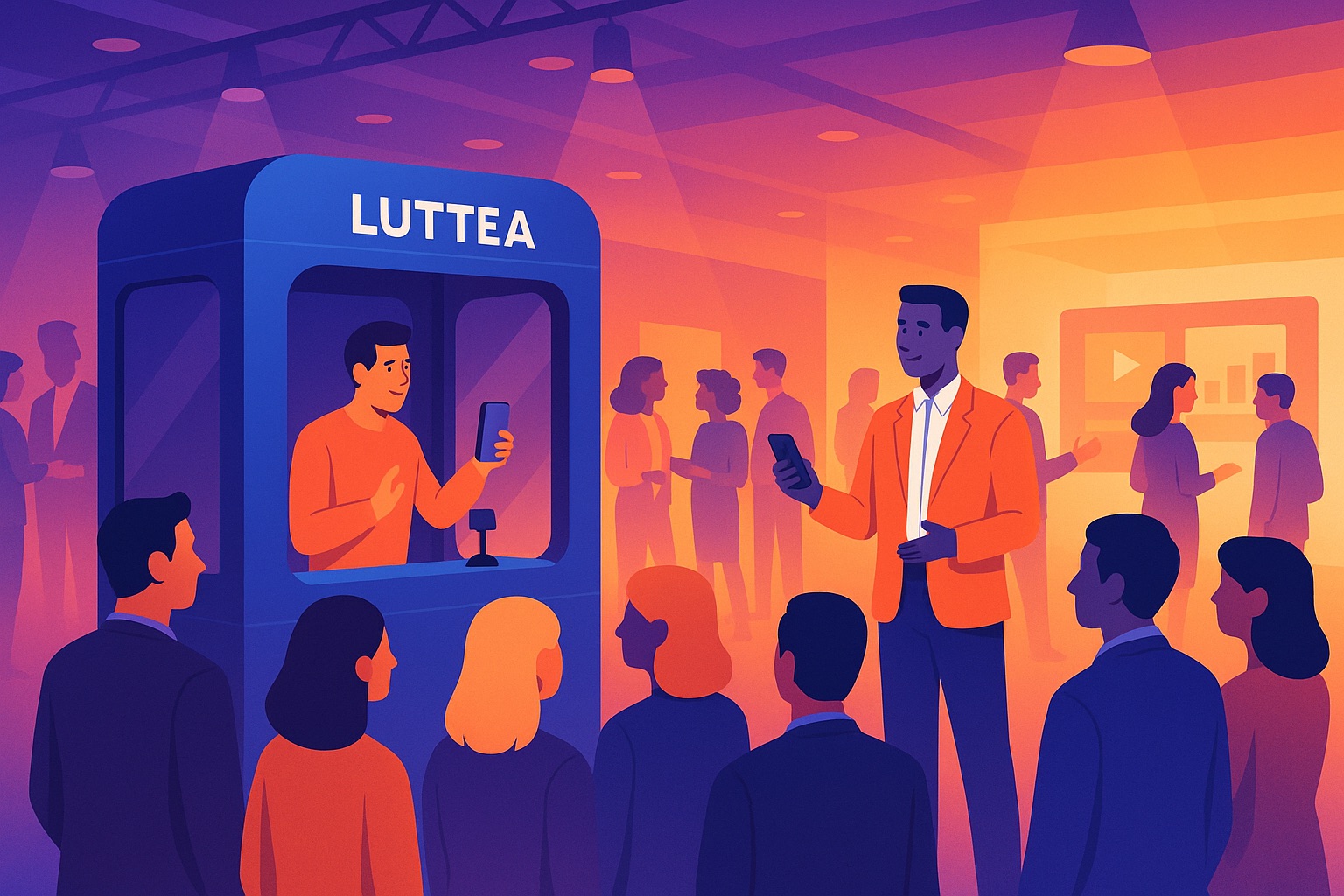








-p-500.webp)



.jpeg)















